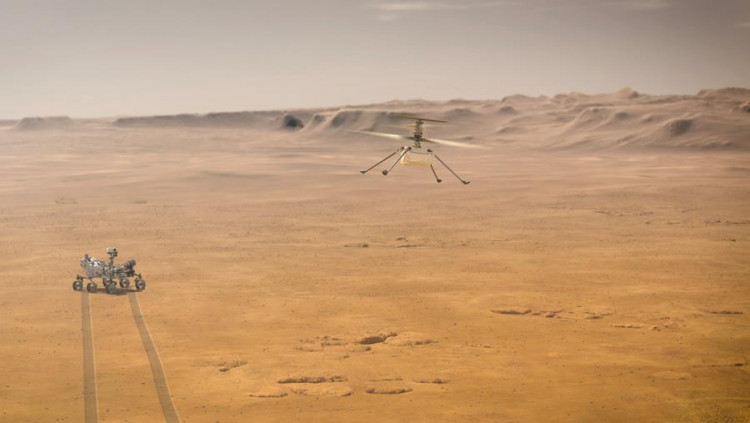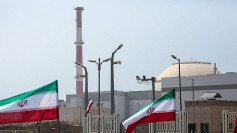NASA's new space rotorcraft has made it through the cold Martian temperatures alone after being deployed by NASA's Perseverance rover, Business Insider reported Tuesday.
By surviving the freezing-cold surface, Ingenuity has overcome one of the toughest hurdles in NASA's quest to fly the first space helicopter on another planet.
Nighttime temperatures at Jezero Crater can drop as low as -90 degrees Celsius, which can freeze and crack sensitive components and damage Ingenuity's onboard batteries required for flight.
The shoebox-sized helicopter underwent a series of movements after it was released from the belly of the rover.
Perseverance gently lowered Ingenuity to the ground over the weekend and backed away to enable the helicopter's solar panel to soak up sunlight.
Ingenuity is set to embark on a 30-day mission, where one or more test flights will be attempted, venturing higher and further each time.
"This is the first time that Ingenuity has been on its own on the surface of Mars," Insider quoted MiMi Aung, NASA's Helicopter project manager, as saying in a news release.
"But we now have confirmation that we have the right insulation, the right heaters, and enough energy in its battery to survive the cold night. We're excited to prepare Ingenuity for its first flight test," Aung said.
Ingenuity is an $85 million, high-risk, high-reward showcase of technology. Engineers at NASA hope it will represent the first controlled flight on another planet. Perseverance will act as witness from a safe distance.
Ingenuity's first flight will hover for about 30 seconds, and then touch back down. Each test will get more challenging, culminating in a final flight that could carry the helicopter to almost 1,000 feet of Martian landscape.
Once Ingenuity completes its test flights, Perseverance will drive toward the cliffs of an ancient river delta for its own science mission: search for fossils of ancient alien microbes on the Red Planet.






